The map below showcases the final design. In this project, I served as the Level Designer, collaborating closely with the team to bring the map from concept to completion. Below the image, you'll find my design process, which outlines my initial concept and the steps I took blending the requirements with my own ideas to achieve the final outcome.
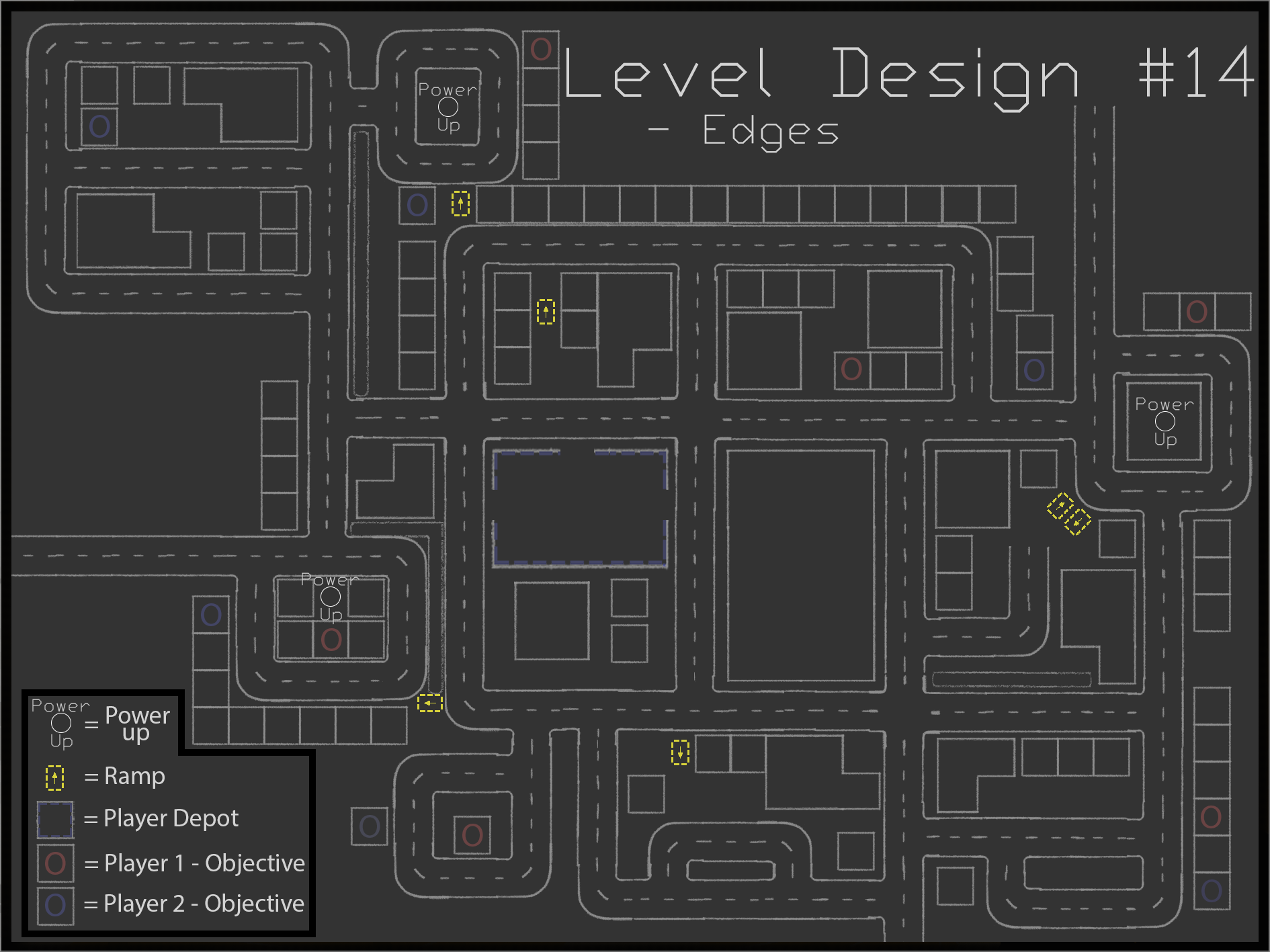
Development
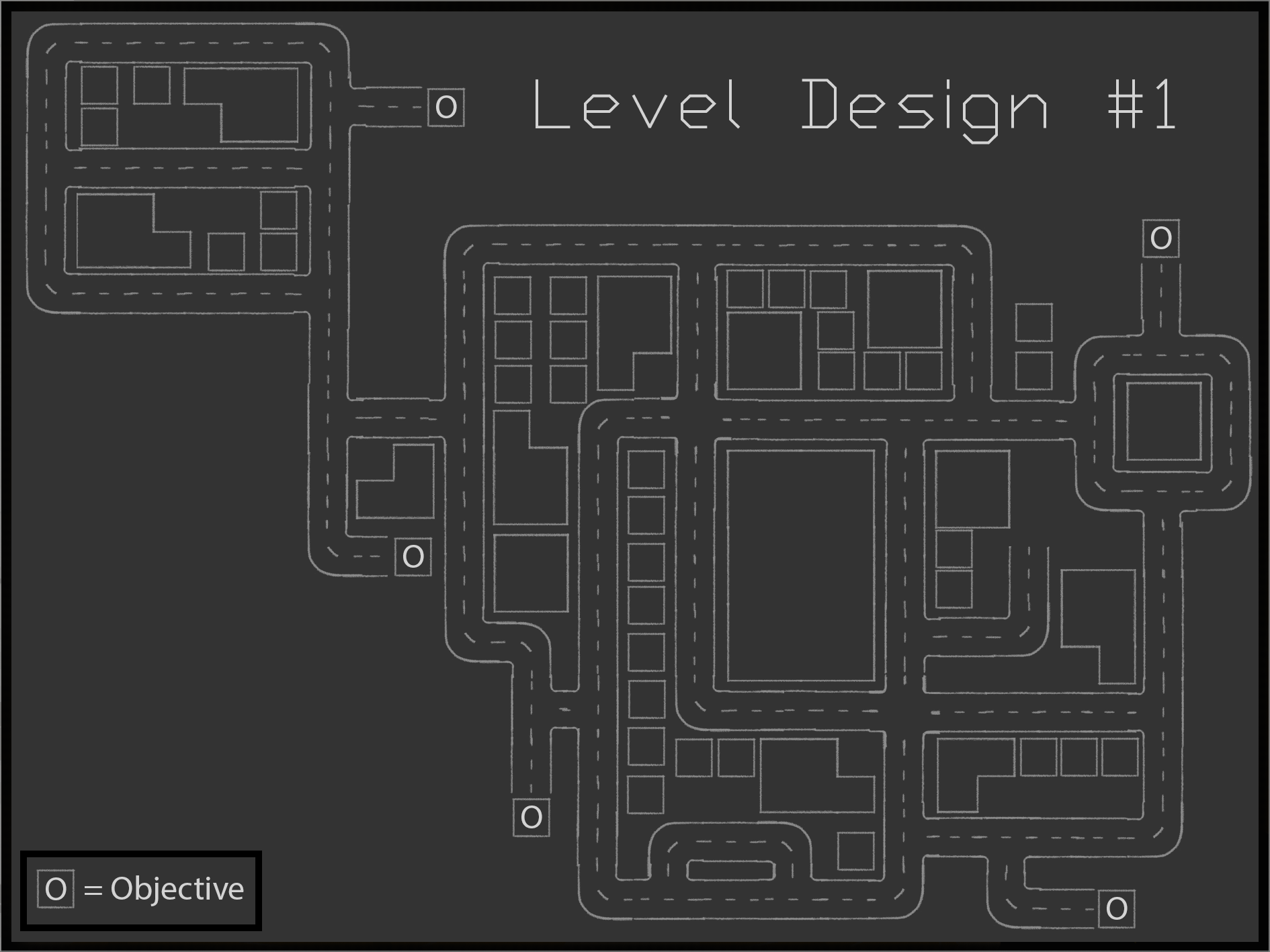
This was the initial level design concept, created before all core mechanics had been finalized by the team. To inform key design decisions. I referenced established driving games with a "open worlds," ensuring the layout would feel intuitive and engaging for players, even in the early iterations.
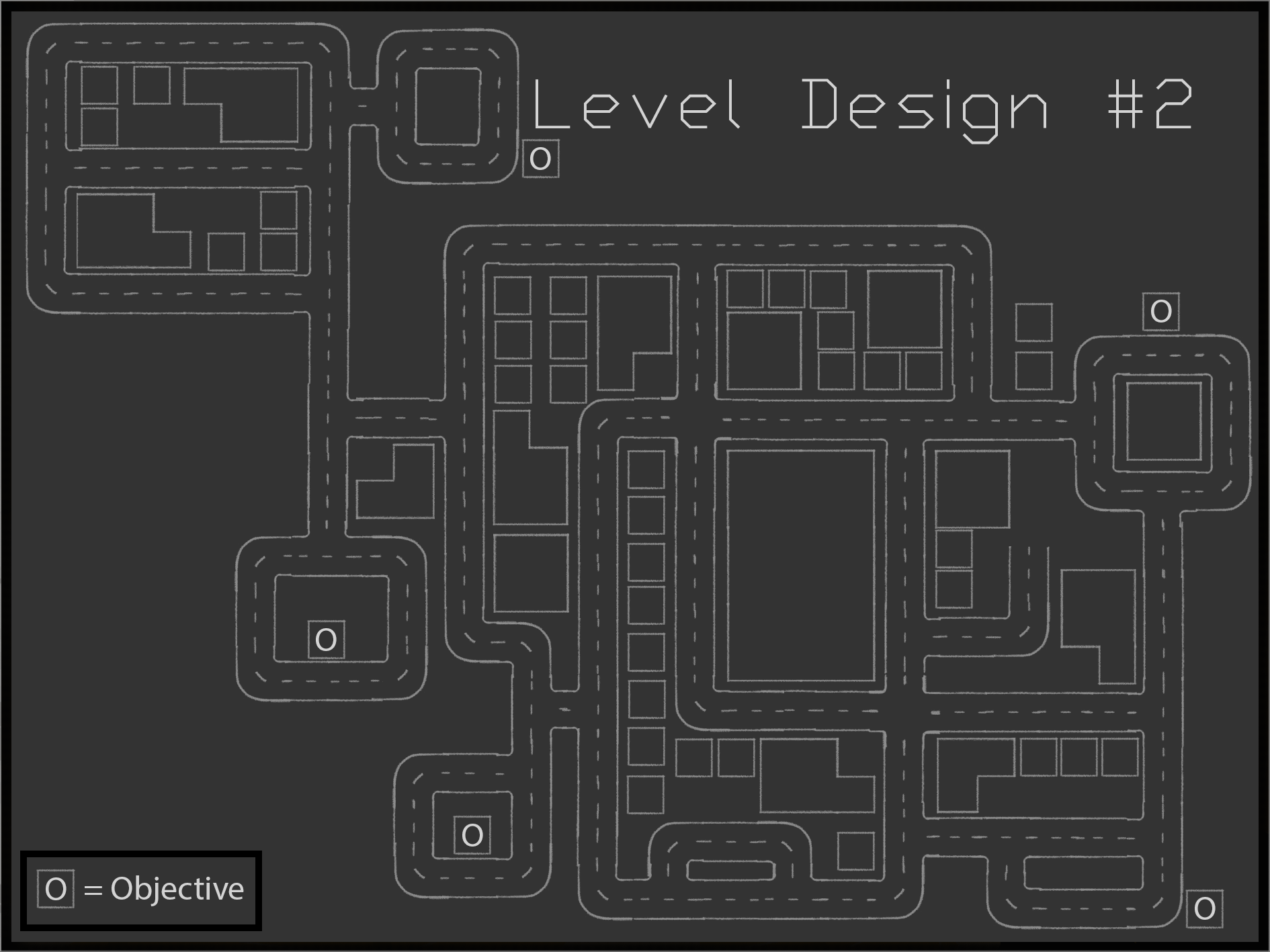
The game required players to deliver packages this involved stopping outside each "shop" to make the drop-off. This disrupteded the pacing and flow of the level. In this iteration, I redesigned the layout so that each shop is placed along in a loop, allowing players to maintain momentum while completing deliveries.
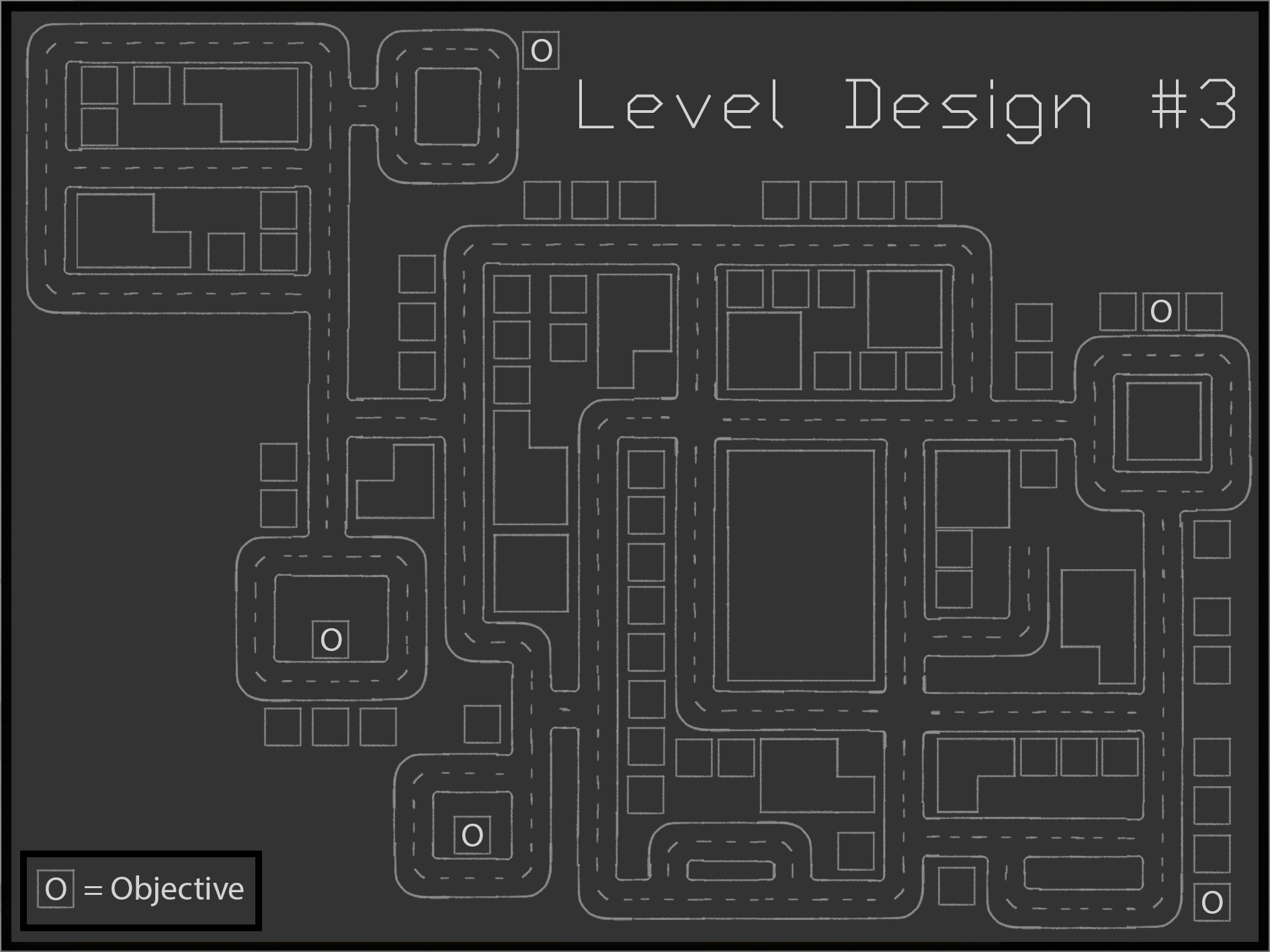
In this iteration, I added extra buildings to make the world feel more lived-in and to subtly direct players along intended paths, preventing easy shortcuts.
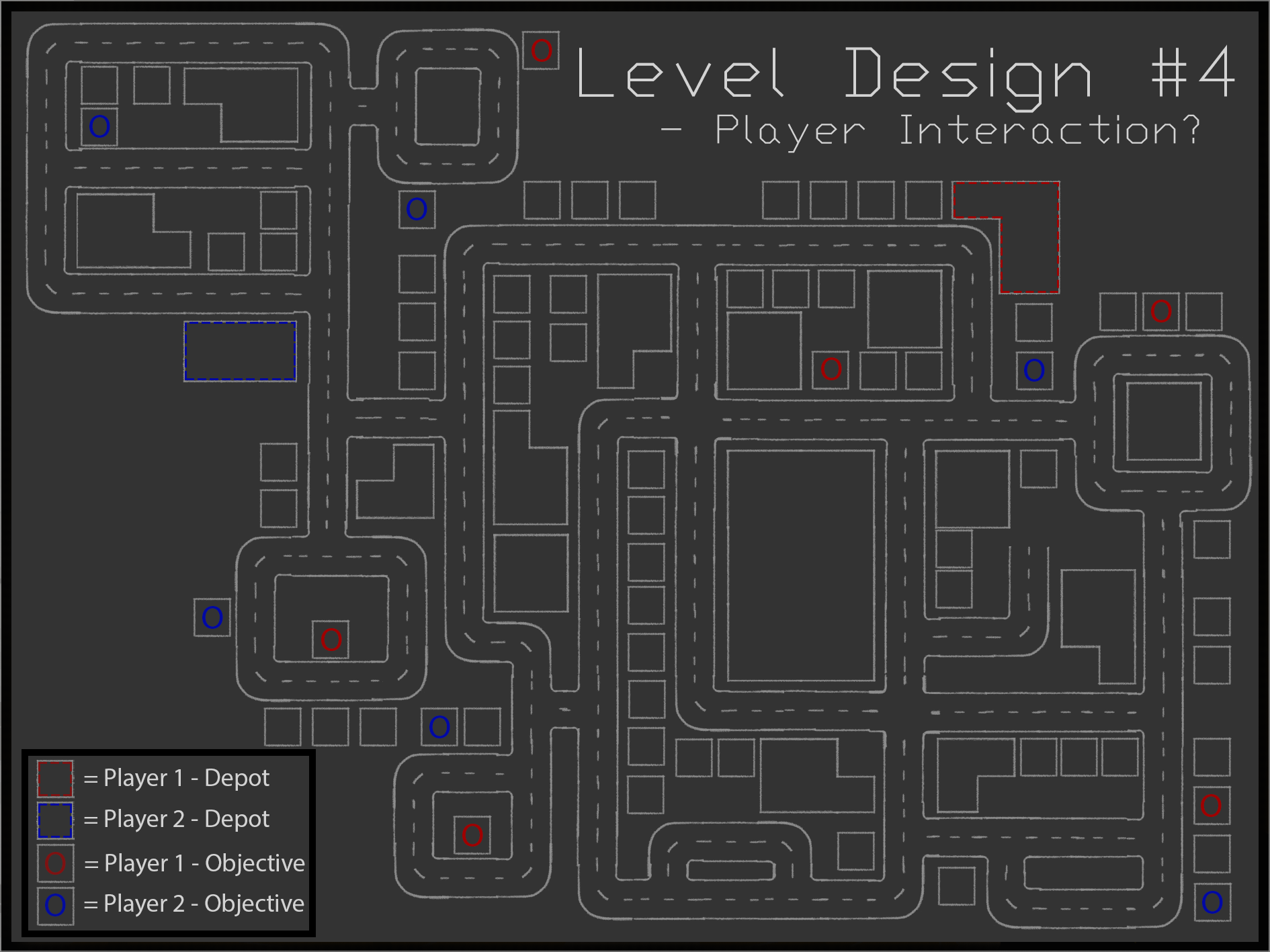
After co-op gameplay was confirmed, I reworked the map to include twice as many objectives, positioned near their original locations. This layout encouraged players to intersect more frequently, creating opportunities for competition and engagement.
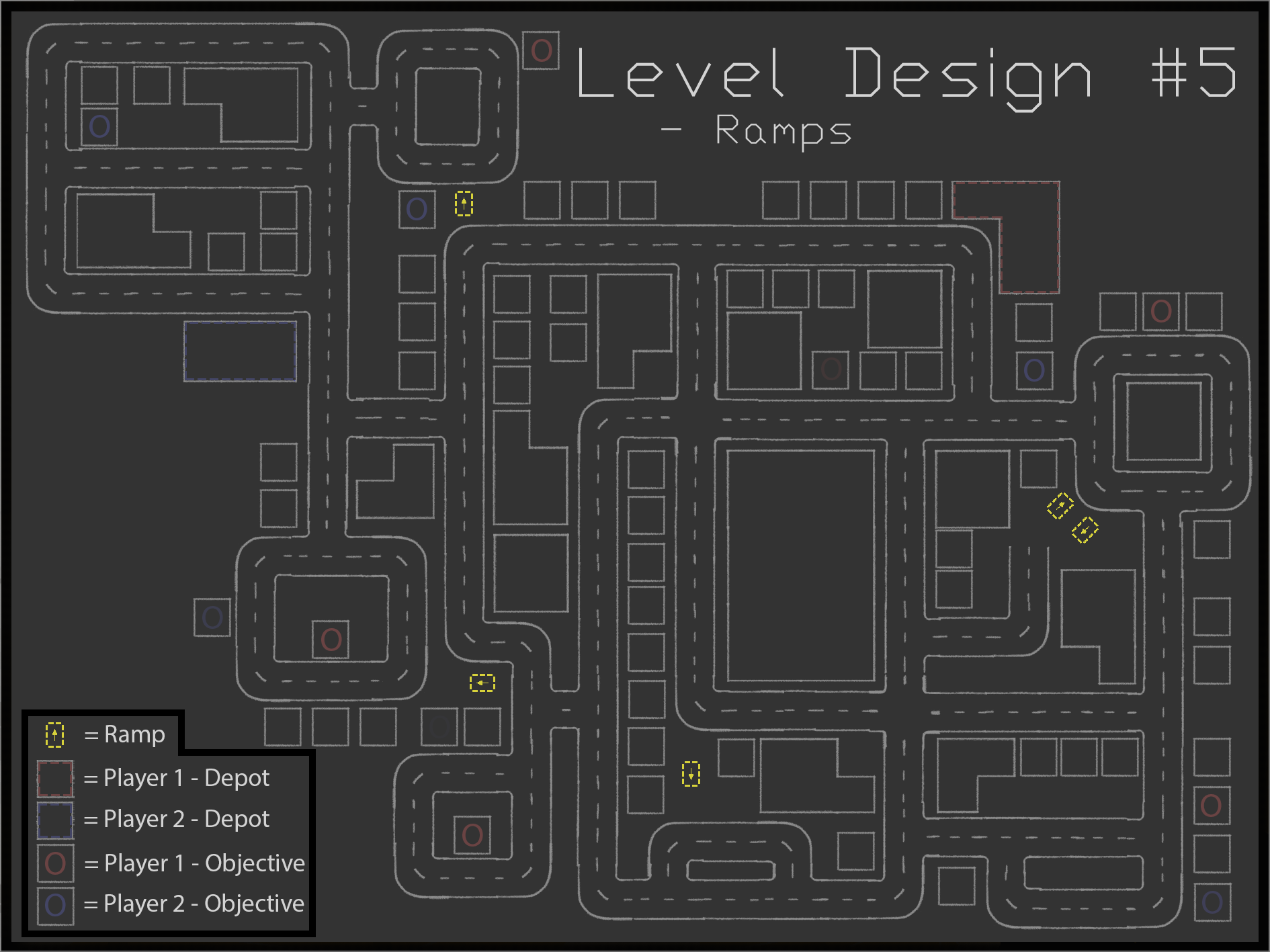
Once ramps were proposed, I changed the layout of the map. I placed them at the end of long straights to ensure players had enough runway to gain momentum, enhancing both gameplay flow and functionality.

In this iteration, I further urbanised the map by adding more environmental details and structural elements. This helped restrict potential shortcuts, ensuring a fairer experience for all players—regardless of how familiar they were with the game.

To support the AI system another team member was developing, I redesigned the map into a more grid-based layout as the AI relied on the spline system. This allowed for easier AI navigation.

As part of a team effort to create a more immersive and believable game world, I removed select buildings and introduced pavements in their place, giving the city a greater sense of life and structure.
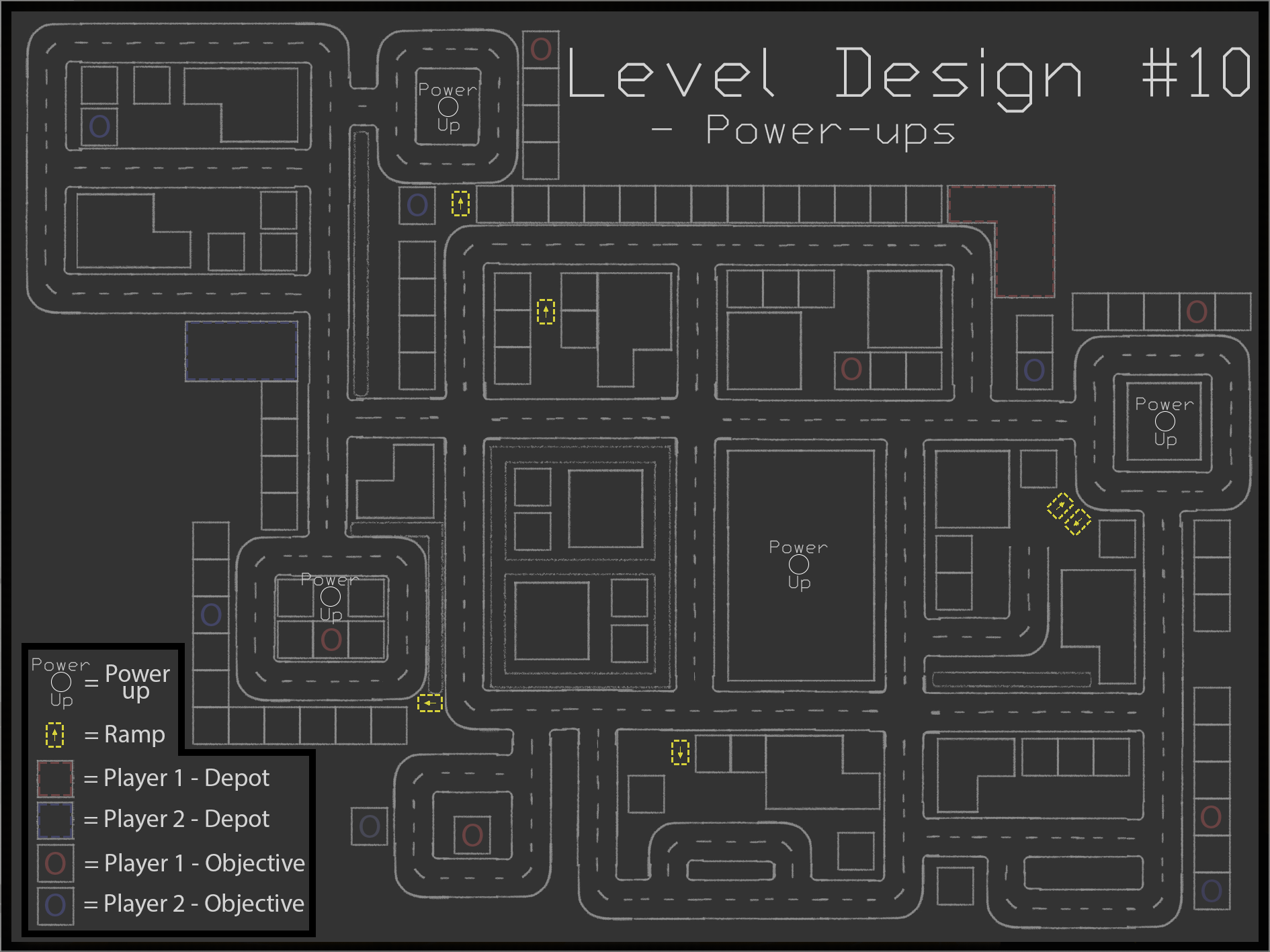
This version of the map was created to accommodate a new mechanic that let players disrupt each other during deliveries, enhancing competitive play.
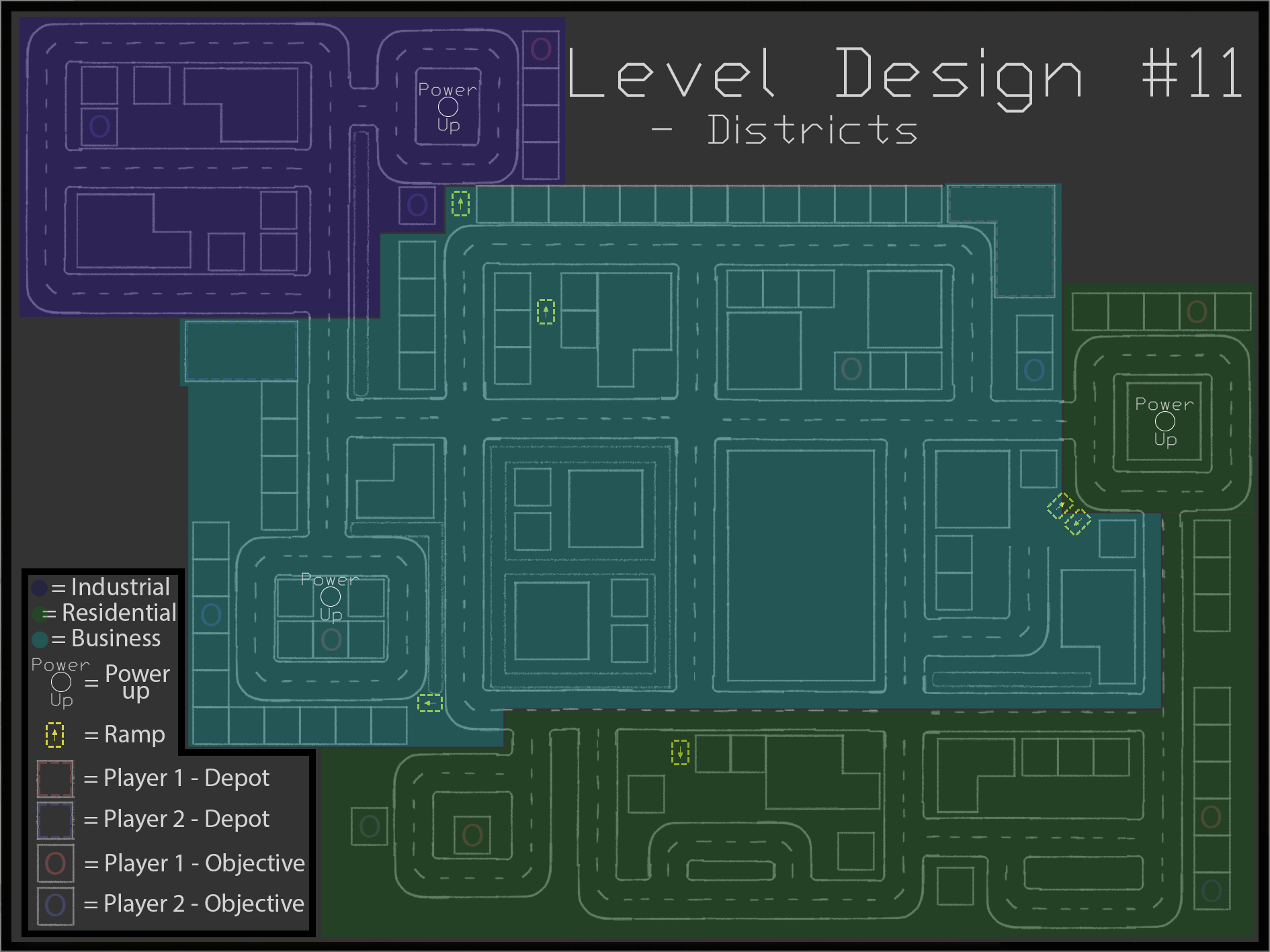
This diagram was shared with the art team to communicate the intended style of building inside each district.
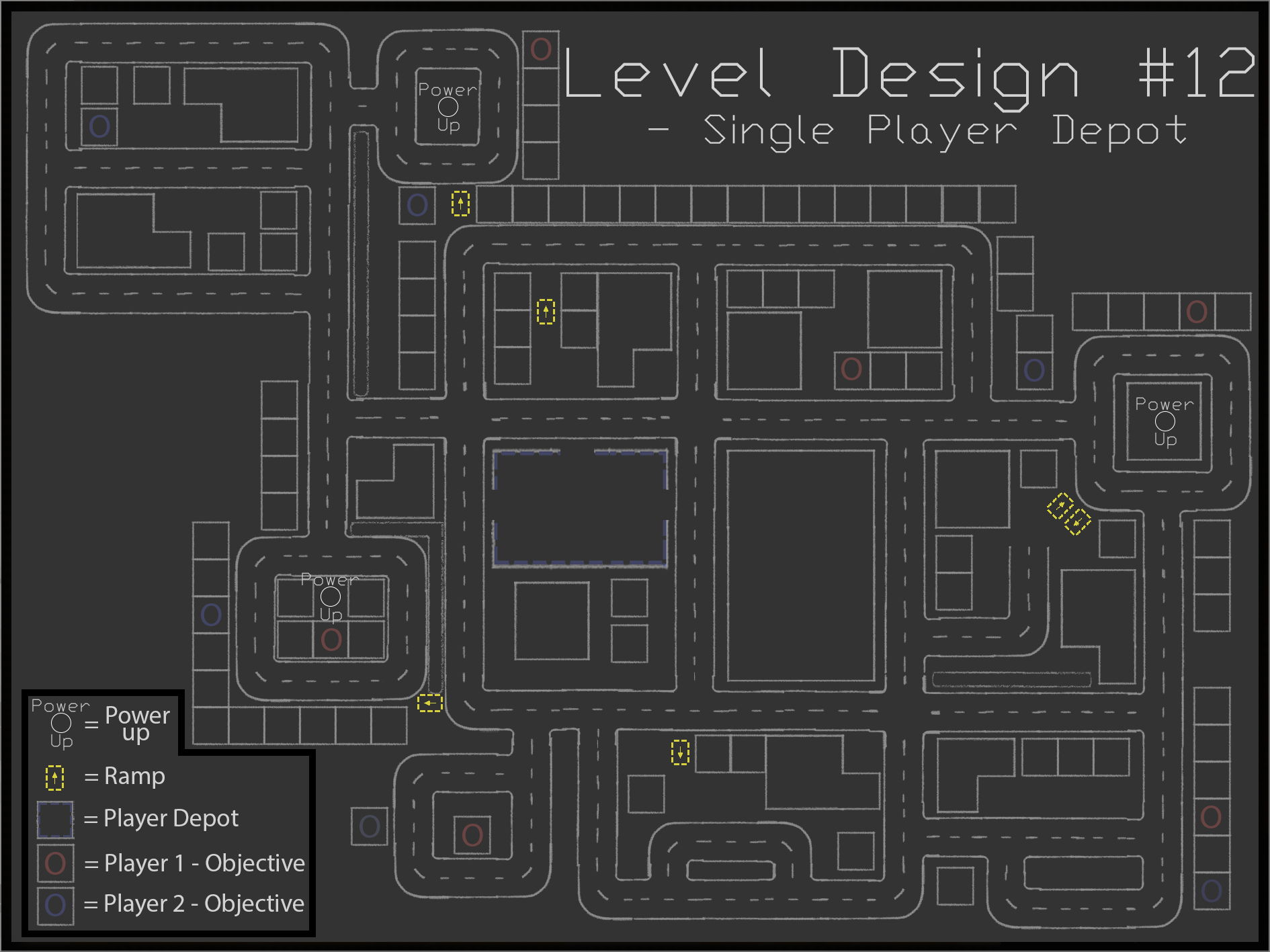
This version reflects our decision to use one central depot, designed to increase the likelihood of players crossing paths and interacting during deliveries.

In the final iteration, I focused on how to define the map's boundary. Rather than using walls, fences, or invisible barriers, I chose a more American style incident barrier. These formed a realistic obstacle for the players. These barriers are placed where the roads end, keeping the design believable and consistent while preventing players from leaving the playable space.